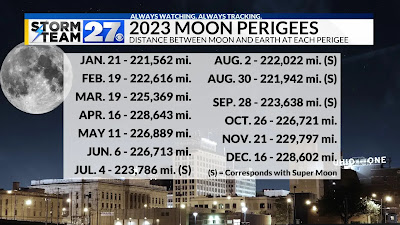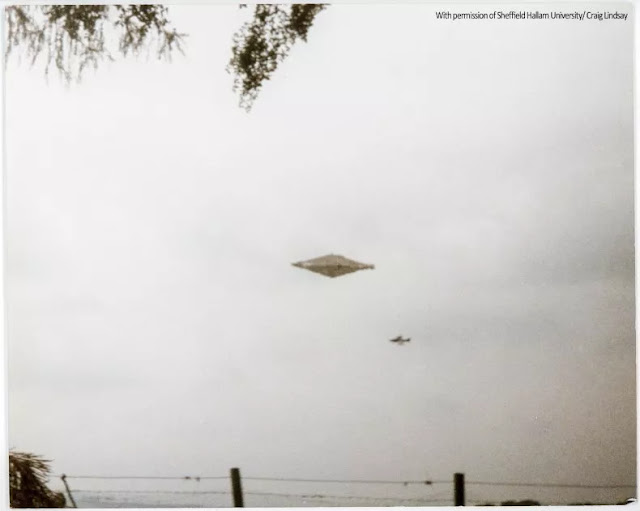 Today, I'll re-look at a subject largely discredited in higher academic circles: flying saucers. The more common term is UFO, or unidentified flying object, coined by the Air Force in 1952. However, a new one has just surfaced, unidentified anomalous phenomena, or UAP, generally linked to the Navy-led UAP Task Force established by the Pentagon in 2020. Adam Goldsack already in 2021 wrote a book with this term. Read this article to catch up on all the recent hoo ha delving into early sightings and what Congress is doing today.
Today, I'll re-look at a subject largely discredited in higher academic circles: flying saucers. The more common term is UFO, or unidentified flying object, coined by the Air Force in 1952. However, a new one has just surfaced, unidentified anomalous phenomena, or UAP, generally linked to the Navy-led UAP Task Force established by the Pentagon in 2020. Adam Goldsack already in 2021 wrote a book with this term. Read this article to catch up on all the recent hoo ha delving into early sightings and what Congress is doing today.- ALIENS and FLYING SAUCERS (2018)....there were many more earlier articles.
- WHY THIS SUDDEN UPSURGE OF INTEREST IN UFOs? (2021). This was Part 1, and there were three parts.
- ON THE MATTER OF KNOWN AND UNIDENTIFIED FLYING OBJECTS (2023)
Americans pray more often, are more likely to attend weekly religious services and ascribe higher importance to faith in their lives than adults in other wealthy, Western democracies, such as Canada, Australia and most European states, according to a recent Pew Research Center study.
For instance, more than half of American adults (55%) say they pray daily, compared with 25% in Canada, 18% in Australia and 6% in Great Britain. (The average European country stands at 22%.) Actually, when it comes to their prayer habits, Americans are more like people in many poorer, developing nations – including South Africa (52%), Bangladesh (57%) and Bolivia (56%) – than people in richer countries.
- Considering our advanced educational requirements, the following graphic is almost freakish. We are an outlier anomaly.
- Take flying saucers, for example: 41% have seen alien spacecraft.
- 34% believe they are alien ships.
- 57% believe in aliens, compared to 31% for Bigfoot and 26% for the Loch Ness Monster.
Yet, James Deardoff had a thought in 1985. Click on that link to read his summary. Essentially, he argues that if a civilization somewhere in our Milky Way Galaxy could find a way to travel at only 1% the speed of light, the odds are high that we would have been reached by now.
- He has published 300 papers over a 30-year career as an immunologist in the Sanford School of Medicine, who spent his post-doc under Nobel laureate David Baltimore of MIT.
- What drove him into extraterrestrials is that in his youth he said he had two alien encounters.
- One might surmise that a scientist would pay a reputational cost for embracing what was once largely seen as tabloid fodder. Nolan recalls a senior figure from the National Cancer Institute taking him aside in a bar around 2014 to warn him he was ruining his career.
- However, he was brave enough to publish last year in Progress in Aerospace Sciences, for few academics of any stripe would actually do so, the possibility of UFOs (Unidentified Flying Objects).
- This paper revisited that luminous red mass--around 50 pounds of molten iron--reported to have fallen on Council Bluffs, Iowa in 1977.
- His team concluded that this blob came from an advanced aerial vehicle, the first time any peer reviewed article in the mainstream dared to so exclaim.
- 1977 was a particularly fertile year for UFO sightings, for several officials in Mississippi encountered a metallic blue object that looked life a spinning top, 15-18 feet off the ground, and were told to keep quiet about it.
- Recently, Nolan has said that aliens are "100%" living among us.
- Back to that article, earlier, in the 1970's, Peter Sturrock, another Stanford faculty member, now a professor emeritus of applied physics, hired a French scientist, Jacques Vallée, who in 1969 had helped the U.S. Air Force declare that flying saucers were bunk, to interact. Vallée subsequently inspired Steven Spielbergs 1977 movie, Close Encounter of the Third Kind. Nothing came of this alliance.
- Since 2007 the Pentagon has apparently been running a cover UFO program, and annually reports to Congress.
- In conclusion, Nolan said:
I spent so much time above to get to what happened last week in Congress, from Time.
- Jimmy Carter, in 1969 when he was a private citizen, said he saw a flying saucer. It was probably the planet Venus. But maybe not.
- The House Oversight Subcommittee on National Security held a day-long meeting with multiple witnesses.
- Most conspicuous was Air Force Major David Grusch, who led a government task force on UAP, Unidentified Aerial Phenomena, the new term replacing UFO.
- U.S. military forces have reported 650 instances of flying objects no existing technology can manage.
- In 2020, the Pentagon released videos of three Navy UAP sightings.
- But:
...science is where things get awfully tricky—especially when it comes to how and why E.T. would be coming to our particular spot in the universe. There are up to 400 billion stars in the Milky Way—virtually every one of which is circled by at least one planet, and many by multiple planets like our own solar system. Our galaxy is about 100,000 light years across; a single light year is just shy of 9 trillion km (6 trillion mi.). Unless Einstein is wrong—and he hasn’t been yet—nothing can exceed light speed, and merely approaching it would take an astonishing degree of technological achievement.
Now take all of those figures and multiply them by two trillion—or the number of galaxies that observations by NASA’s Hubble Space Telescope have estimated are in the universe. That makes for an awful lot of planets and an awful lot of cosmic real estate for a visiting spacecraft to cover just to come to our little world.
Time magazine showed ten historic photos of unidentified aircraft going back to 1950. Here is the 1990 Calvine photo taken in 1990.
Here is another by Sergio Loaiza in 1971 over Costa Rica.-
























Comments
Post a Comment